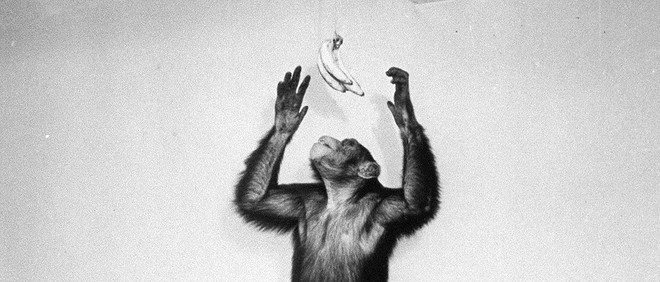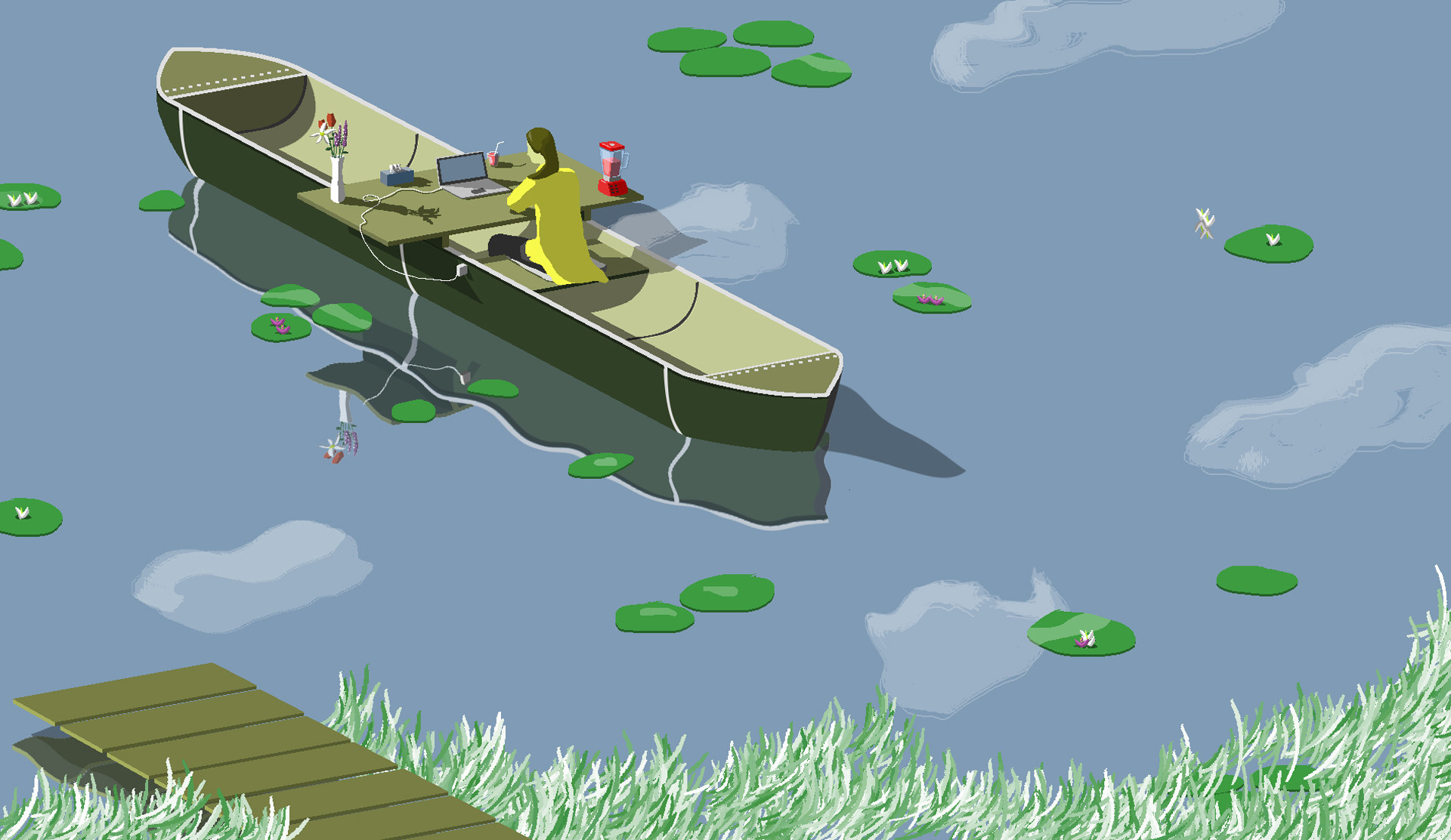Have years gone by while you put off writing that novel?
Or would you like, for once, to begin a paper on time?
Maybe you’d rather paint? Or make a documentary?
Or finally get around to starting your own business?
When I asked you which book we simply had to include in this self-improvement series, the vast majority said Getting Things Done by David Allen. Because who doesn’t want to get more done in less time? Who doesn’t want put a stop to endless procrastination?
There’s a good chance that, like me, you have been waiting for the “ideal circumstances.” Before you know it, you’ve spent years believing that, first, you need a good work space where you can type. Or first you have to quit your job so you devote yourself to your project full-time. Or maybe you really need to read a self-help book first, to learn the right way to go about it. (Guilty as charged: I read Getting Things Done and a dozen other books on productivity.)
Author Charles Bukowski made mincemeat out of that idea in a poem. Below you see the poem in comic-strip form:
Text by Charles Bukowski, "air and light and time and space" (1992). Illustrations by Gavin Aung Than of Zen Pencils.

Conclusion: there’s no such thing as a perfect studio, and there’s no such thing as “ideal circumstances.”
Then what are we waiting for?
Canadian professor Tim Pychyl has spent the past nineteen years researching that question. He told journalism site Vox that we procrastinate in order to avoid work that makes us feel bad. Because, for example, we don’t really believe that we can do it (I could start writing that novel, but I know it won’t be any good).
In order to avoid that unpleasant feeling, we do something else, something that boosts our mood temporarily (okay, now I’ve loaded the dishwasher!). But then procrastination itself causes more shame and guilt (I never get anything done!), and that leads to another, vicious cycle of procrastination.
What remedy does the professor suggest?
Just get started.
Definitely not “just do it” – Pychyl finds that too intimidating and too vague – but rather: just get started.
That sounds really stupid. Of course you have to get started. Thanks for nothing!
But Pychyl explains why it’s the only solution: “Somehow adults believe that their motivational state has to match the task at hand.” But because this is rarely the case, we say, “I’m not in the mood.”
Year in, year out, you can make yourself believe that, if you don’t feel like doing something, it’s better not even to try. Actually, though, not feeling like it means that you’re afraid of what’s at stake, that you’re experiencing self-doubt. If you truly want to get something done, the only thing you can do is confront that fear. Pychyl says to be strict with yourself: “Okay, I can tell that I don’t feel like it right now, but I’m just going to get started anyway.”
It’s comforting thought, really, that you only have to get started and then keep at it. So that’s what I do now. I keep at it, no matter how frustrating it gets. The first ten sentences I typed for this story were a disaster, but they got me going.
Now that I knew what’s at the heart of the problem, I could give the solution my full attention. What are some ways to help yourself over that hurdle of getting going? What do you have to do to “just get started?” I now knew what I was looking for, so I went back to Getting Things Done and those countless other self-help books I had read.
Using them, I put together a three-course breakfast, my recipe – one I’ve been successfully testing for months – for a productive day.
1. Begin the day with a post-it
It’s incredibly tempting to start your day with email. But remember, email is a to-do list that other people can add to. Before you know it you’ve spent the whole morning responding to things that other people think are important, instead of working on what is important to you.
But remember, email is a to-do list that other people can add to
In order to avoid that, I use a trick from The Four Hour Work Week, a self-help book by Tim Ferriss. Grab a post-it or small piece of paper, and write down a maximum of three things that you want to accomplish that day. Try to imagine whether you would go home satisfied at the end of the day if you’d crossed off those items. If so, you’re on the right track.
Tip: Make sure your action items always start with a verb. That forces you to be as concrete as possible and keeps things off your list that are too vague or too big.
Then what about email? You simply wait and check it later in the day. Accept, says Ferriss, that there will be small glitches. Maybe you’ll be late replying to a mail. That’s no big deal. Apologize and move on. “The point is that you accomplish a few big things that can have a fundamental impact on your work or your life,” Ferriss explains.
2. Next, eat a live frog
“Eat a live frog every morning, and nothing worse will happen to you the rest of the day.”
This quote, attributed to Mark Twain, is a kind of holy grail in the productivity industry, and rightly so. Self-help author Brian Tracy dedicated an entire book to this quote, and defines the frog as follows (because yes, it is a metaphor):
“Your ‘frog’ is your biggest, most important task, the one you are most likely to procrastinate on if you don’t do something about it. It is also the one task that can have the greatest positive impact on your life and results at the moment.”
Take a look at that post-it. Which task is the most stressful for you? Which one has the biggest consequences? Do that one right away. For one thing, at the start of your day you have the most energy for tackling that difficult task. For another, it will save you a bunch of stress the rest of the day, because the hardest thing is already done! In the resulting high you can wrap up the rest of your tasks much more quickly.
3. The kitchen timer is your best friend
Just getting started on your most difficult tasks takes enormous effort. For me, it’s a daily battle just getting through the first few minutes. But as soon as I have conquered them, I quickly get into a flow. The rotten part is, that flow is awfully fragile. One little text message and my concentration is gone. Then I can begin the battle all over again.
Minimize your chances of being distracted
That means it’s important to minimize the chance that you’ll be distracted. Turn off all notifications on your laptop, put your phone in do-not-disturb mode. Maximize the screen you’re working in. Find a quiet place in the office. Use earplugs. Guard your concentration with your life. Technology philosopher Evgeny Morozov once said that he puts his Internet cable and iPhone in a time lock safe.
And then there is also a technique from Francesco Cirillo that helps to stay concentrated while working. It’s called “Pomodoro,” named after his tomato-shaped kitchen timer. Sometimes I set a kitchen timer – actually, its virtual equivalent – for 25 minutes. Then I promise myself that, until the timer goes off, I will focus all my concentration on a task. After that I walk around for a few minutes, relax a little, and then I set the timer again. This technique prevents me from checking out Facebook, because I am working with a clear-cut deadline. When I want to finish something on the weekend, I use a variation of this technique: I alternate, for example, between working for an hour and watching an episode of a series.
During the day, I spend two or three pomodori dealing with email and returning phone calls. I take care of emails that take less than two minutes right away; messages requiring more time go on my action list, and I process them during a new pomodoro.
And then there are those off-days
Begin the day by writing down your most important tasks on a post-it, start with the most difficult one, and make sure you won’t be distracted. Those are the three tips that help me to just get started on an important task.
And I nearly forgot the most important tip: Accept that some days are simply off-days. Anything you get done on days like that is a bonus. I often use those days for whittling down my reading list. Or I surrender to what I would normally do when procrastinating, like unnecessary surfing. That often brings me interesting new ideas and perspectives.
Good luck!
—Translated from Dutch by Diane Schaap and Erica Moore
More from De Correspondent:

 Long live intrinsic motivation. Or why it’s time to ditch the carrots and the sticks
Humans are lazy and greedy by nature, or so we tend to believe. But a new generation of psychologists and economists disagree. Their groundbreaking research paves the way for a revolution in healthcare and education and from the factory floor to the boardroom.
Long live intrinsic motivation. Or why it’s time to ditch the carrots and the sticks
Humans are lazy and greedy by nature, or so we tend to believe. But a new generation of psychologists and economists disagree. Their groundbreaking research paves the way for a revolution in healthcare and education and from the factory floor to the boardroom.

 A tree walks into a courtroom
Peter Wohlleben is convinced that the way we look at trees is about to change radically. His book The Hidden Life of Trees was a hit in his native Germany and is now being translated into 26 languages; the English version came out Tuesday. Does the book’s success indicate a sea change in our view of the world and ourselves?
A tree walks into a courtroom
Peter Wohlleben is convinced that the way we look at trees is about to change radically. His book The Hidden Life of Trees was a hit in his native Germany and is now being translated into 26 languages; the English version came out Tuesday. Does the book’s success indicate a sea change in our view of the world and ourselves?

 Save the refugees, become a banker
What does it take to make the world a better place? An emerging philanthropic movement uses a radical new approach to allocating its resources. What can we learn from these uber-rational doers of good? And what should we be wary of?
Save the refugees, become a banker
What does it take to make the world a better place? An emerging philanthropic movement uses a radical new approach to allocating its resources. What can we learn from these uber-rational doers of good? And what should we be wary of?




